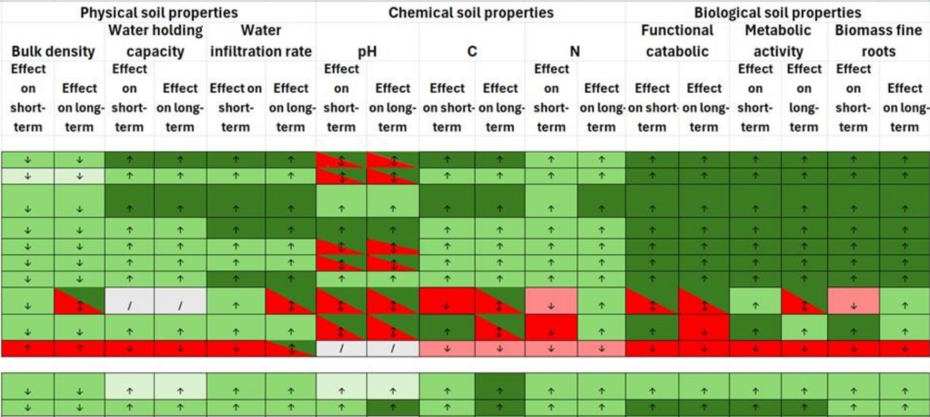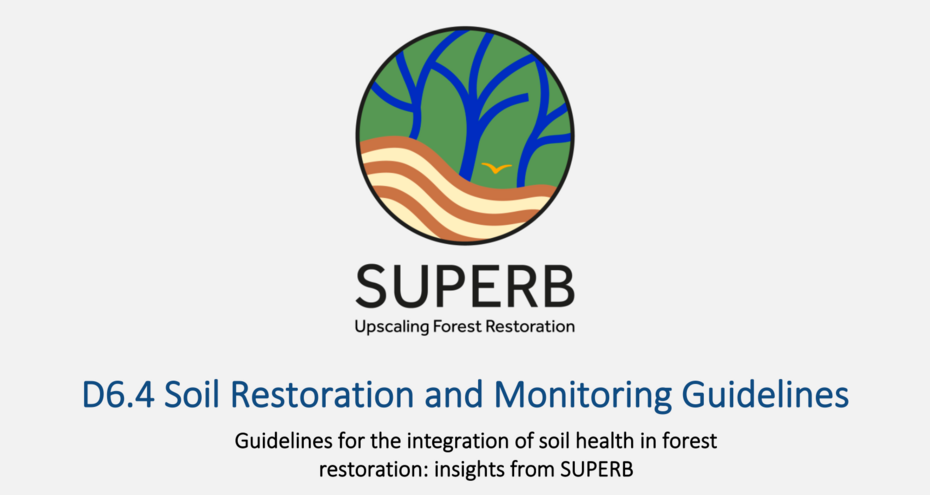Best Practice Knowledge Base
5.2. How to restore?

Soil is both an integral and essential part of the forest ecosystem and a critical component that requires specific attention and management. Multiple forest restoration strategies are explicitly targeted on soil health, while some others can indirectly impact soil health.
The followign list summarises the multiple forest restoration strategies that can directly or indirectly impact soil health (in alphabetical order). Some of these restoration techniques and their impacts on soil properties are developed in the corresponding sections (click on hyperlinks in blue):
- Assisted migration
- Clearcutting (followed by planting/natural regeneration)
- Control of invasive species
- Controlled burning
- Coppice management
- Creation of microhabitats
- Deadwood retention
- Dilution of soil contaminants
- Enrichment planting
- Fencing
- Fertilization
- Fire breaks
- Girdling
- Harvesting group of trees (selection cut)
- Harvesting individual trees
- Inoculation of microorganisms
- Liming/rock dust application
- Natural regeneration
- Organic amendments
- Pest and disease control
- Pesticide application
- Planting with broadleaved and coniferous species
- Planting with broadleaved species
- Protection of old growth remnants
- Protection of riparian forest
- Pruning
- Re-introduction of key species
- Rich litter species
- Seeding
- Site preparation: heavy machinery
- Site preparation: mulching
- Site preparation: tilling/ploughing
- Site preparation: topsoil removal
- Soil scarification
- Thinning
- Underplanting
- Veteranization of trees
Related resources
Forest and Soil Restoration Table
An Excel table that outlines various forest restoration measures and their effects on key soil parameters. This table offers a practical overview for assessing the benefits and limitations of different approaches to forest and soil restoration. Colours indicate a positive or negative effect, while the arrows indicate if there is an increase or decrease of the soil properties. When interpreting this table, it is important to consider that factors like previous land use and implementation quality can strongly influence soil recovery outcomes.
Soil Restoration and Monitoring Guidelines
Forests are essential ecosystems, covering approximately 35% of Europe’s land area. They harbour a significant share of Europe’s terrestrial biodiversity and provide a wide range of ecosystem services critical to European citizens. However, forests across Europe are increasingly threatened by various forms of degradation, driven by multiple, often anthropogenic factors.



